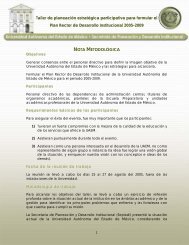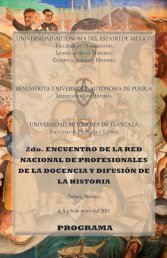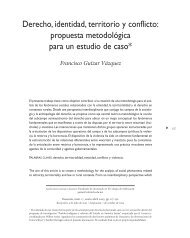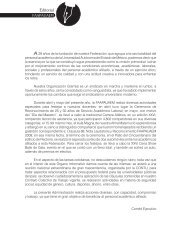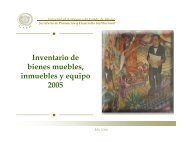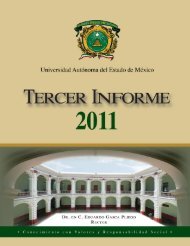Editorial - Universidad Autónoma del Estado de México
Editorial - Universidad Autónoma del Estado de México
Editorial - Universidad Autónoma del Estado de México
Create successful ePaper yourself
Turn your PDF publications into a flip-book with our unique Google optimized e-Paper software.
16 Paradigma económico Año 3 Núm. 1<br />
To formally test the presence of a unit root, Zivot and Andrews<br />
consi<strong>de</strong>red the following t statistic for testing a=1 in (2),<br />
(3)<br />
Notice that this statistic <strong>de</strong>pends on the location of the break<br />
fraction . In this framework, the goal of Zivot and Andrews is<br />
to estimate the breakpoint that gives the heaviest weight to the<br />
trend stationary alternative, that is, the date of the break is chosen<br />
to give the least favourable result for the null hypothesis (1) using<br />
the test statistic (3). In other words, is chosen to minimise the<br />
t statistic for testing a=1. Let <strong>de</strong>note such minimising value;<br />
then, by <strong>de</strong>finition,<br />
where is an specified subset of (0,1).<br />
The number of extra regressors, k, required in the adf regressions<br />
is allowed to vary for each tentative choice of . In turn, in<br />
or<strong>de</strong>r to <strong>de</strong>termine the truncation lag parameter, k, we follow the<br />
same selection procedure proposed by Perron (1989). 12 Finally,<br />
let us say that when we treat the selection of as a result of<br />
the estimation procedure we can no longer use the critical values<br />
of Perron (1989). Therefore, Zivot and Andrews (1992) <strong>de</strong>rive<br />
the asymptotic distributions of the test statistic in (4) and the<br />
corresponding critical values to test the null in (1) against the<br />
alternative in (2). 13<br />
(4)<br />
12. The procedure starts with an upper bound lag, say k max<br />
. If the last inclu<strong>de</strong>d lag<br />
is significant, choose k = k max<br />
; if not, reduce k by 1 until the last lag becomes significant.<br />
If no lags are significant, set k = 0; k max<br />
is set equal to 8 by Perron (1989). A 10% value<br />
of the asymptotic normal distribution, 1.60, is applied to evaluate the significance of the<br />
last lag. Moreover, Ng and Perron (1995) use a simulation approach to prove that these<br />
sequential tests are superior to the information-based methods, such as the information<br />
criteria of Akaike and Schwarz, since the former shows less size distortions without<br />
much loss of power. Zivot and Andrews (1992) and Lumsdaine and Papell (1997) used<br />
the same approach.<br />
13. For further methodological <strong>de</strong>tails see Zivot and Andrews (1992). Lucatero



